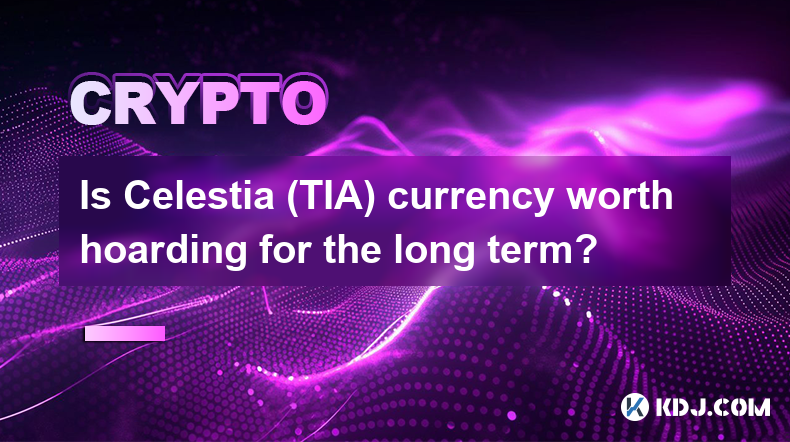-
 Bitcoin
Bitcoin $99,577.7827
2.77% -
 Ethereum
Ethereum $1,933.4035
4.93% -
 Tether USDt
Tether USDt $1.0002
0.03% -
 XRP
XRP $2.2030
2.81% -
 BNB
BNB $616.1256
1.57% -
 Solana
Solana $153.0057
3.62% -
 USDC
USDC $1.0001
0.01% -
 Dogecoin
Dogecoin $0.1830
5.50% -
 Cardano
Cardano $0.7151
4.50% -
 TRON
TRON $0.2505
1.89% -
 Sui
Sui $3.7051
8.86% -
 Chainlink
Chainlink $14.7665
5.95% -
 Avalanche
Avalanche $20.9867
5.45% -
 Stellar
Stellar $0.2722
3.79% -
 Bitcoin Cash
Bitcoin Cash $413.3602
10.19% -
 UNUS SED LEO
UNUS SED LEO $8.7924
1.21% -
 Shiba Inu
Shiba Inu $0.0...01343
4.39% -
 Hedera
Hedera $0.1859
4.67% -
 Toncoin
Toncoin $3.1187
3.38% -
 Hyperliquid
Hyperliquid $21.6882
1.30% -
 Litecoin
Litecoin $91.9648
-1.05% -
 Polkadot
Polkadot $4.2389
6.22% -
 Monero
Monero $291.7538
1.03% -
 Dai
Dai $1.0003
0.01% -
 Bitget Token
Bitget Token $4.3174
-0.22% -
 Ethena USDe
Ethena USDe $1.0004
0.01% -
 Pi
Pi $0.6225
7.32% -
 Pepe
Pepe $0.0...09208
12.98% -
 Bittensor
Bittensor $404.3195
9.62% -
 Uniswap
Uniswap $5.1820
5.18%
Is Celestia (TIA) currency worth hoarding for the long term?
Despite facing competition, Celestia (TIA) stands out as a promising investment for the long term due to its unique modular design and specialized Data Availability Layer (DAL).
Dec 08, 2024 at 01:25 pm

Is Celestia (TIA) Currency Worth Hoarding for the Long Term?
Introduction:
Celestia (TIA) is a highly anticipated blockchain project that has garnered significant attention from the cryptocurrency community. It aims to revolutionize the blockchain landscape by introducing a novel approach to data availability and scalability. However, the question of whether TIA is a worthwhile investment for the long term remains a topic of discussion. This comprehensive analysis will delve into the potential of TIA, examining its unique features, market dynamics, and long-term prospects to determine its suitability for long-term hoarding.
Understanding the Celestia Framework:
- Modularity and Interoperability: Celestia is designed with a modular architecture that separates the consensus layer from the data availability layer. This allows developers to build scalable applications by leveraging the data from multiple blockchains, promoting interoperability and cross-chain functionality.
- Data Availability Layer: At the core of Celestia's design is its Data Availability Layer (DAL), which focuses on providing secure and verifiable data storage. Rollups and other layer-2 solutions can leverage DAL's services, eliminating the need for their own data storage, thus enhancing scalability and reducing network overhead.
- Consensus Layer: Celestia's consensus layer, known as Cosmos SDK, ensures data integrity and finalizes transactions. It utilizes a Proof-of-Stake (PoS) consensus mechanism, which improves energy efficiency and security compared to traditional Proof-of-Work (PoW) mechanisms.
Market Dynamics and Competitive Landscape:
- Growing Demand for Scalability: The blockchain industry is experiencing a surge in demand for scalable solutions that can handle the increasing transaction volumes and data requirements of decentralized applications (dApps). Celestia's modular design and DAL address this need by providing a robust platform for building and deploying scalable applications.
- Competition and Differentiation: While Celestia faces competition from other data availability solutions such as Polygon and SKALE, it differentiates itself by offering a dedicated and scalable DAL that is separate from the consensus layer. This unique approach provides a more efficient and cost-effective solution for data management in the blockchain ecosystem.
Long-Term Investment Potential:
- Investment Thesis: Investing in TIA for the long term hinges on the belief that the demand for scalable data availability services will continue to grow as the blockchain industry matures. Celestia's unique architecture and potential to empower a wide range of applications make it a compelling investment opportunity for those seeking exposure to the rapidly evolving Layer-2 infrastructure market.
- Risk Considerations: Cryptocurrency investments carry inherent risks. Investors should carefully assess the potential risks associated with TIA, including regulatory uncertainties, technological limitations, and market volatility, before making any investment decisions.
- Investment Horizon: Hoarding TIA for the long term implies a holding period of several years. Investors should be prepared to hold through market fluctuations and maintain a long-term perspective on their investment.
Conclusion:
Celestia (TIA) is an innovative blockchain project that tackles the scalability challenges facing the industry. Its modular architecture, efficient DAL, and competitive positioning provide a compelling investment thesis for those seeking long-term exposure to the growing Layer-2 infrastructure market. However, investors should carefully consider the risks involved and adopt a long-term investment horizon to maximize their potential returns while mitigating potential losses.
Disclaimer:info@kdj.com
The information provided is not trading advice. kdj.com does not assume any responsibility for any investments made based on the information provided in this article. Cryptocurrencies are highly volatile and it is highly recommended that you invest with caution after thorough research!
If you believe that the content used on this website infringes your copyright, please contact us immediately (info@kdj.com) and we will delete it promptly.
- Dogecoin (DOGE) Price Has the Potential to Experience a Large Increase After Forming a Rare Pattern
- 2025-05-08 18:15:13
- Flare Network's total value locked has spiked by more than 160% over the past two weeks
- 2025-05-08 18:15:13
- EOS Price Surges 20% as the Coin Swaps to Vaulta
- 2025-05-08 18:10:12
- Streamlining Sei's Architecture to Focus Solely on EVM
- 2025-05-08 18:10:12
- Meme Coin Marvel Shiba Inu (SHIB) Could Be Challenged by Fast-Rising DeFi Coin, Mutuum Finance (MUTM)
- 2025-05-08 18:05:12
- Arizona Governor Katie Hobbs signs House Bill 2749 into law, allowing the establishment of a Bitcoin and Digital Assets Reserve Fund
- 2025-05-08 18:05:12
Related knowledge

Is Ethereum smart contract call fee high? How to optimize costs?
May 08,2025 at 09:35am
Is Ethereum Smart Contract Call Fee High? How to Optimize Costs? The world of Ethereum smart contracts has revolutionized the way we think about decentralized applications and blockchain technology. However, one of the most frequently discussed topics within this realm is the cost associated with executing smart contract calls. In this article, we will ...

Is Ethereum Layer2 fee low? How to use it cheaper?
May 08,2025 at 03:56am
The question of whether Ethereum Layer 2 solutions offer lower fees and how to use them more economically is a topic of great interest within the cryptocurrency community. Ethereum's Layer 2 solutions have been developed to address the high transaction fees and scalability issues associated with the main Ethereum network. In this article, we will delve ...

How to calculate Ethereum network fee? How to reduce transaction costs?
May 08,2025 at 02:15am
Understanding and managing Ethereum network fees is crucial for anyone involved in transactions on the Ethereum blockchain. The network fee, also known as gas fee, is the amount of Ether (ETH) required to successfully conduct a transaction or execute a smart contract on the Ethereum network. Calculating these fees and finding ways to reduce them can sig...

What is Ethereum Gas Fee? How to optimize Gas Fee to save costs?
May 08,2025 at 03:43am
Ethereum gas fees are a crucial aspect of interacting with the Ethereum blockchain. Understanding and optimizing these fees can significantly impact the cost-effectiveness of transactions and smart contract interactions. In this article, we will delve into what Ethereum gas fees are, how they are calculated, and provide detailed strategies for optimizin...

How to perform MOVE cross-chain transfer? What to do if the gas fee is too high?
May 07,2025 at 08:03pm
Introduction to MOVE Cross-Chain TransferCross-chain transfers have become an essential part of the cryptocurrency ecosystem, allowing users to move assets between different blockchain networks. One of the popular protocols for achieving this is the MOVE cross-chain transfer. This article will guide you through the process of performing a MOVE cross-cha...

How is the DYDX liquidation price calculated? How is the forced liquidation mechanism?
May 08,2025 at 06:49am
The DYDX liquidation price and the forced liquidation mechanism are crucial aspects of trading on the dYdX platform, a decentralized exchange that allows users to trade perpetual contracts. Understanding these concepts is essential for managing risk and maximizing potential returns. In this article, we will delve into the details of how the DYDX liquida...

Is Ethereum smart contract call fee high? How to optimize costs?
May 08,2025 at 09:35am
Is Ethereum Smart Contract Call Fee High? How to Optimize Costs? The world of Ethereum smart contracts has revolutionized the way we think about decentralized applications and blockchain technology. However, one of the most frequently discussed topics within this realm is the cost associated with executing smart contract calls. In this article, we will ...

Is Ethereum Layer2 fee low? How to use it cheaper?
May 08,2025 at 03:56am
The question of whether Ethereum Layer 2 solutions offer lower fees and how to use them more economically is a topic of great interest within the cryptocurrency community. Ethereum's Layer 2 solutions have been developed to address the high transaction fees and scalability issues associated with the main Ethereum network. In this article, we will delve ...

How to calculate Ethereum network fee? How to reduce transaction costs?
May 08,2025 at 02:15am
Understanding and managing Ethereum network fees is crucial for anyone involved in transactions on the Ethereum blockchain. The network fee, also known as gas fee, is the amount of Ether (ETH) required to successfully conduct a transaction or execute a smart contract on the Ethereum network. Calculating these fees and finding ways to reduce them can sig...

What is Ethereum Gas Fee? How to optimize Gas Fee to save costs?
May 08,2025 at 03:43am
Ethereum gas fees are a crucial aspect of interacting with the Ethereum blockchain. Understanding and optimizing these fees can significantly impact the cost-effectiveness of transactions and smart contract interactions. In this article, we will delve into what Ethereum gas fees are, how they are calculated, and provide detailed strategies for optimizin...

How to perform MOVE cross-chain transfer? What to do if the gas fee is too high?
May 07,2025 at 08:03pm
Introduction to MOVE Cross-Chain TransferCross-chain transfers have become an essential part of the cryptocurrency ecosystem, allowing users to move assets between different blockchain networks. One of the popular protocols for achieving this is the MOVE cross-chain transfer. This article will guide you through the process of performing a MOVE cross-cha...

How is the DYDX liquidation price calculated? How is the forced liquidation mechanism?
May 08,2025 at 06:49am
The DYDX liquidation price and the forced liquidation mechanism are crucial aspects of trading on the dYdX platform, a decentralized exchange that allows users to trade perpetual contracts. Understanding these concepts is essential for managing risk and maximizing potential returns. In this article, we will delve into the details of how the DYDX liquida...
See all articles
























![[2025.05.08] The two routes of Bitcoin continue to be observed, and gold is still bullish. [2025.05.08] The two routes of Bitcoin continue to be observed, and gold is still bullish.](/uploads/2025/05/08/cryptocurrencies-news/videos/routes-bitcoin-continue-observed-gold-bullish/image_500_375.webp)




























































